Top 12 Most Dangerous Traditions/Practices In The World Today
| Table of Contents |
They seem to exist in every age group, ethnicity, and culture: traditions. A tradition is defined as only a collection of customs. Just as tossing rice during a wedding is seen as a tradition, so are Christmas celebrations. One of the many things that unite individuals from different places and cultures is their shared traditions. But customs aren't necessarily enjoyable activities.
Most quickly think of something harmful and disregard customs. However, there are many customs around the world that have the potential to be fatal or seriously harmful to one's body. This is a list of over ten customs that could endanger one's life or a limb.
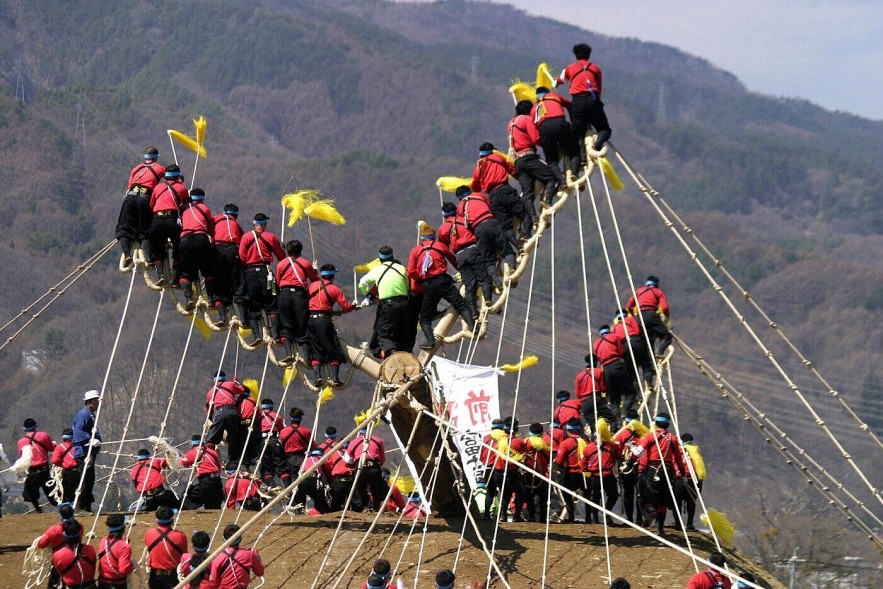 |
| Top 10+ Most Dangerous Traditions/Practices In The World Today |
Top 12 Most Dangerous Traditions/Practices In The World
1. Cooper's Hill Cheese-Rolling
 |
Every year on the Spring Bank Holiday, participants and onlookers from all over the world congregate at Brockworth, Gloucestershire, in the heart of the English countryside, for the annual cheese-rolling competition. It's a dangerous, well-known custom that originated in the early 1800s and is a little strange. A massive wheel of nearly eight-pound Double Gloucester cheese rolls down the grassy hillside, with competitors chasing it at a top speed of seventy miles per hour. The chasers are hot on their heels, spinning crazily out of control.
There are frequently a lot of injuries, including as sprains, concussions, and broken bones. It has also been known for reckless runners or bouncing cheeses to hurt onlookers. Who would have thought cheese could be so harmful? Despite the formal closure of the event in 2010, devoted participants have managed to keep it continuing.
READ MORE: 10 Unconventional New Year Traditions That Ensure Year-long Good Fortune
2. Running of the Bulls
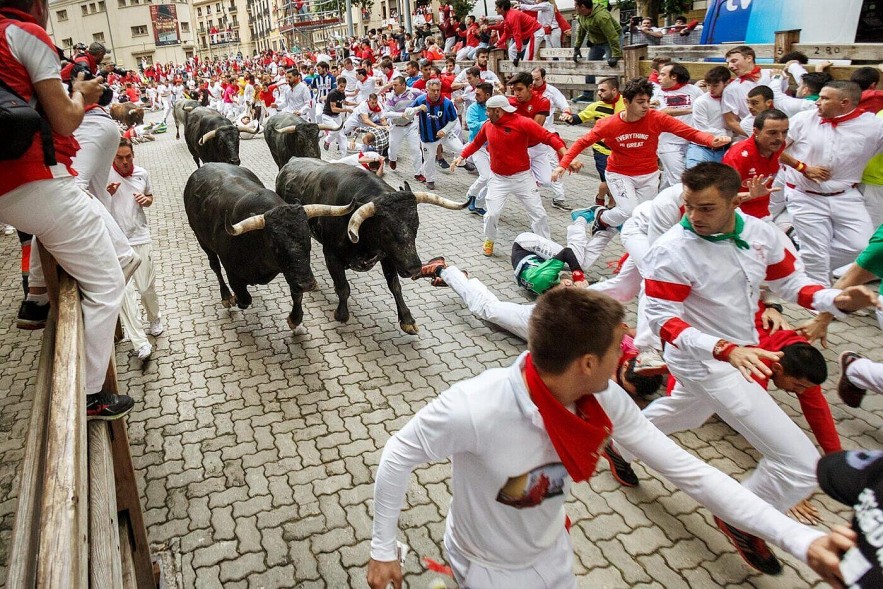 |
During the eight-day San Fermin festival in early July, the extremely risky and adrenaline-pumping Running of the Bulls takes place in the streets of Pamplona's ancient town. This centuries-old custom draws more than a million onlookers and is sometimes included on bucket lists. Six charging fighting bulls pursue some 2,000 thrill-seekers as they run for their life down a quarter-mile circuit through the tiny, cobblestone streets.
Many of the participants are outfitted in the traditional white costumes with a crimson scarf and belt. It's risky because gorings do occur, particularly if a vengeful bull breaks away from the pack. In pile-ups, people can also be crushed or hurt; since 1910, there have been 16 fatalities. Observing everything from behind the fence is far safer.
READ MORE: Top 10 Weirdest New Year Traditions In The U.S
3. Cutting off Fingers
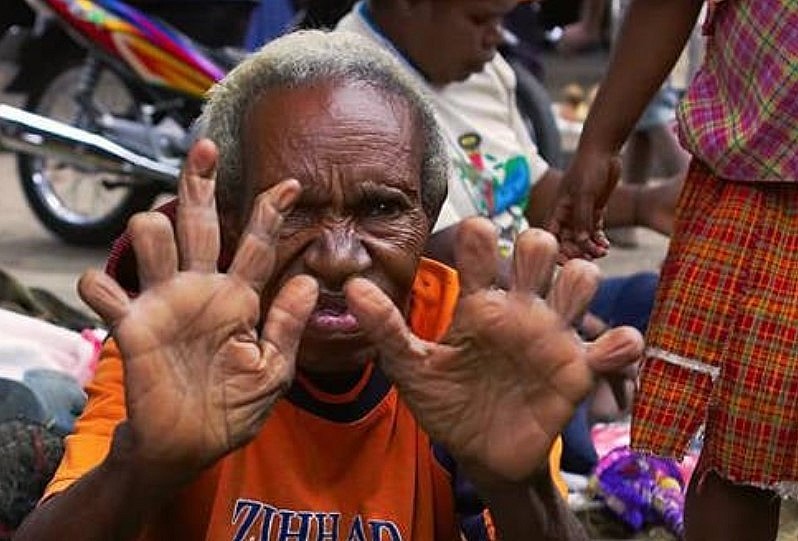 |
| One of the customs carried down through the generations among the Dani tribe in Papua, Indonesia, is the chopping off of fingers. |
The Dani tribe of Indonesia's Papua have an unusual funeral custom. To express their affection for the deceased, the living amputate their fingers. The fingers and their loved ones are buried beneath the earth. They think it's the most appropriate approach to express sorrow and acknowledge the deceased's impact on the living.
Naturally, this practice is disappearing due to the health dangers involved.
4. Female Circumcision
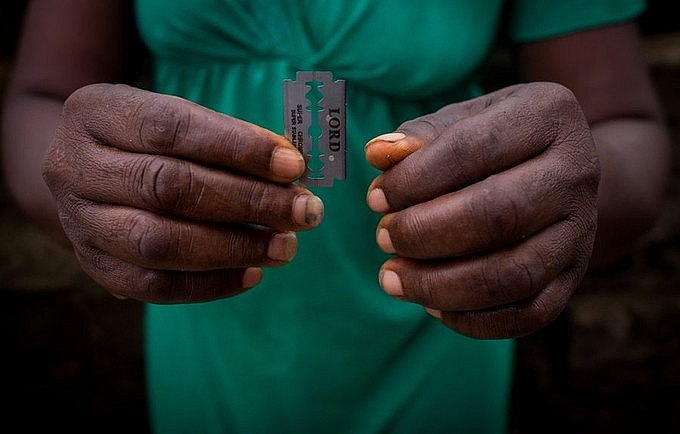 |
| Female genital mutilation |
For religious and occasionally cultural reasons, tribes in countries like Ethiopia, Sudan, Mali, and Egypt continue to practice female circumcision, despite the fact that it is frowned upon and viewed as incredibly harsh and hazardous. It is estimated that this operation affects more than 130 million women globally, with over 2 million cases occurring annually.
Since there is no anesthesia or medication used during the treatment, many women may die from shock or from heavy bleeding. On occasion, non-sterilized instruments can lead to infections in others. It is estimated that at least one-third of women who undergo female circumcision pass away from various complications, however, exact statistics are unavailable.
5. College Hazing
 |
| College Hazing |
There is a claim that roughly 47% of all first-year college students will experience "hazing." It's safe to claim that the majority of social, cultural, and academic clubs harass new members even though it's illegal and proven false on college campuses. The implementation of laws like Matt's Law has been an attempt to stop hazing.
Hazing is thought to be most prevalent in athletics-related clubs. Although there are many additional techniques, alcohol is used in most hazing situations. Hazing has been the cause of at least one death on college campuses since 1970.
6. Cannibalism
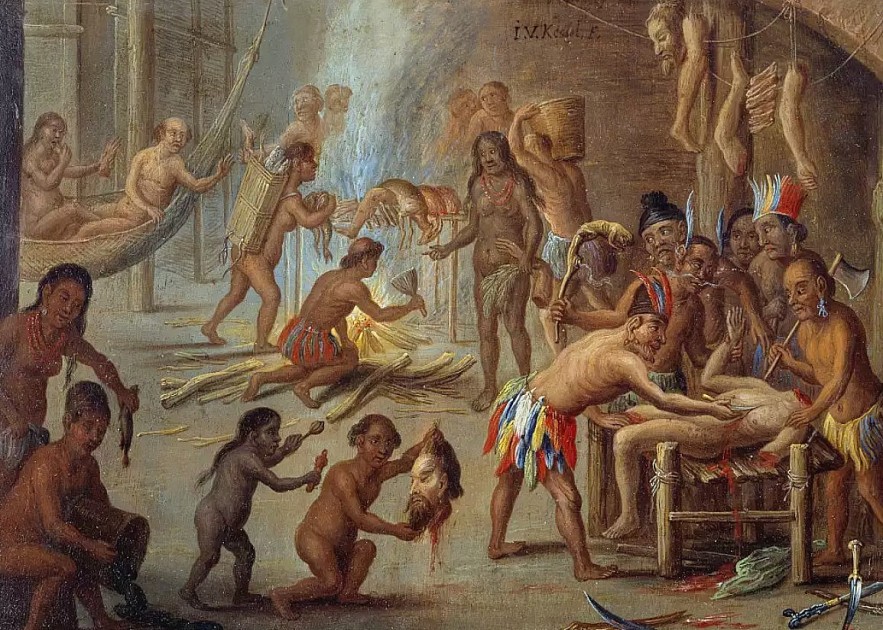 |
| A variety of behaviors where one member of a species eats all or parts of another member are referred to as cannibalism. Many birds, insects, and mammals—including chimpanzees and humans—all exhibit this behavior frequently. |
It seems impossible for humanity to eradicate cannibalism. It doesn't seem that making the conduct illegal will deter individuals from performing it. After they pass away, the Korowai Tribe of Indonesian New Guinea consumes the body of their healer. In addition, the Amazonian Yanomami Tribe engages in cannibalism.
After forty-five days, they make a mixture of the deceased's bone dust and eat it in banana soup. They will also eat the ashes that remain after cremation precisely one year from now. It is also thought that the Aghoris, cannibal monks of Varanasi, India, eat the remains of the deceased.
7. El Colacho (Baby-jumping Festival)
 |
This baby-jumping festival in Castrillo de Murcia, northern Spain, is so bizarre that it is mind-boggling. An important cultural event, El Colacho, blends pagan and Catholic traditions and dates back to the 1600s. After frightening the residents of the town with his devil-mayhem outfit, a man leaps over a row of newborns that have been laid on beds to absolve them of sin.
Surprisingly, despite the fact that it may appear extremely dangerous, no injuries have ever been reported.
8. Onbashira
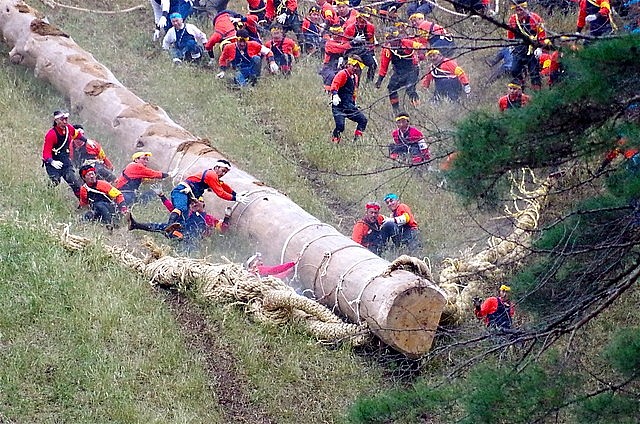 |
| Onbashira: The Most Dangerous Festival in Japan |
Many people in the area believe that Onbashira, a celebration held in Tokyo once every six years, has been around for more than 1200 years. The name directly translates to "the honored pillars." The celebration is divided into two sections: Yamadashi and Satobiki, which happen in May and April, respectively.
The most hazardous portion of the celebration is Yamadashi. Men enter the forest and chop down trees. After that, they tie ropes to the trees and pull them down the mountain. While many have came out with injuries and others have died while performing the customs, many consider this to be a sign of bravery.
9. Throw Babies: Heads or Tails
 |
| Tossing babies off a roof for luck |
In Maharashtra, India, there is a Muslim shrine where people throw babies for good fortune. It entails throwing newborns onto an extended sheet held by men who are positioned on the ground from the edge of a 15-meter-tall shrine wall.
Despite the fact that this technique has not been linked to any significant injuries, efforts are ongoing to have it outlawed in India.
10. Walking on Fire
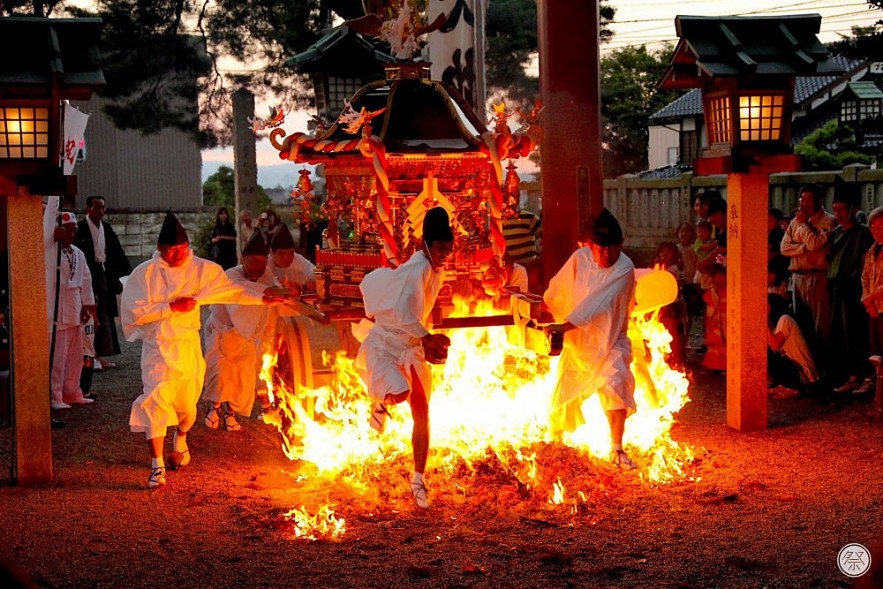 |
| The "Kushida Shrine Shuki Reitaisai" (Hiwatari Shinji) is a grand autumn festival held at Kushida Shrine, which is said to have continued for over a dozen centuries |
'Hiwatari Shinji' is the name of the Shinto Buddhist firewalking activity in Japan. Every December, on the second Sunday, Akibasan Entsu-Ji shrine celebrates this holiday. A certified priest of Entsu-Ji will cross burning coals. There is a widespread idea that this rite offers psychological clarity and a spiritual purification. After the priest has finished his walk, the followers can take part in the ceremony as well.
11. A New Year's Dive
On January 1st, divers from all over the world descend into Baikal, the freshwater reserve and the deepest lake in the world. The lake descends to a depth of around 5,390 feet. Today, divers drill a hole in the 40-meter-deep layer of ice covering the lake's surface. The New Year tree is carried to the bottom of the lake by a designated diver.
The divers dance around the tree after it has been planted. Though it may not seem like a very dangerous ritual, keep in mind that this lake is the deepest in the world and that divers must swim with over 100 kg of equipment. This practice has been followed since 1982.
12. Polar Bear Plunge
 |
| Polar Bear Plunge at Bradford Beach on Lake Michigan in Milwaukee |
Polar Bear Plunge takes place at many locations around the country, and there is definitely never a shortage of participants. It involves jumping into cold water during the winter season for a charity organization. The biggest plunge takes place in Sandy Point State Park, Maryland, and raises money for the Special Olympics.
Though it seems like nothing but harmless charity, the plunge can be dangerous. In some locations, participants have to sign a document consenting to the fact that they know the plunge can cause serious injury such as paralysis, hypothermia, and possibly even death. Thankfully, no one has died from taking the plunge.
Summary
When in Rome, do as the Romans do -- or not! Consider following those traditions or not when you stay at those countries. You don't have to always follow what the Romans do!
 The Most Common New Year's Eve Customs Observed in the United States The Most Common New Year's Eve Customs Observed in the United States Numerous well-liked customs for good fortune in the New Year exist throughout the United States. This is a list of fascinating US customs that you ... |
 Top 10 Strangest Valentine's Day Customs Worldwide Top 10 Strangest Valentine's Day Customs Worldwide Valentine's Day is observed globally, although strange customs are followed in some nations. View the list of the Top 10 Strangest Valentine's Day Customs Ever! |
 Galentine’s Day (February 13): Date, Celebration, Tradition and Meaning Galentine’s Day (February 13): Date, Celebration, Tradition and Meaning Do you know what Galentine's Day (February 13) is all about? Does this sound like Valentine's Day? It's not. Find out when it is and ... |
























